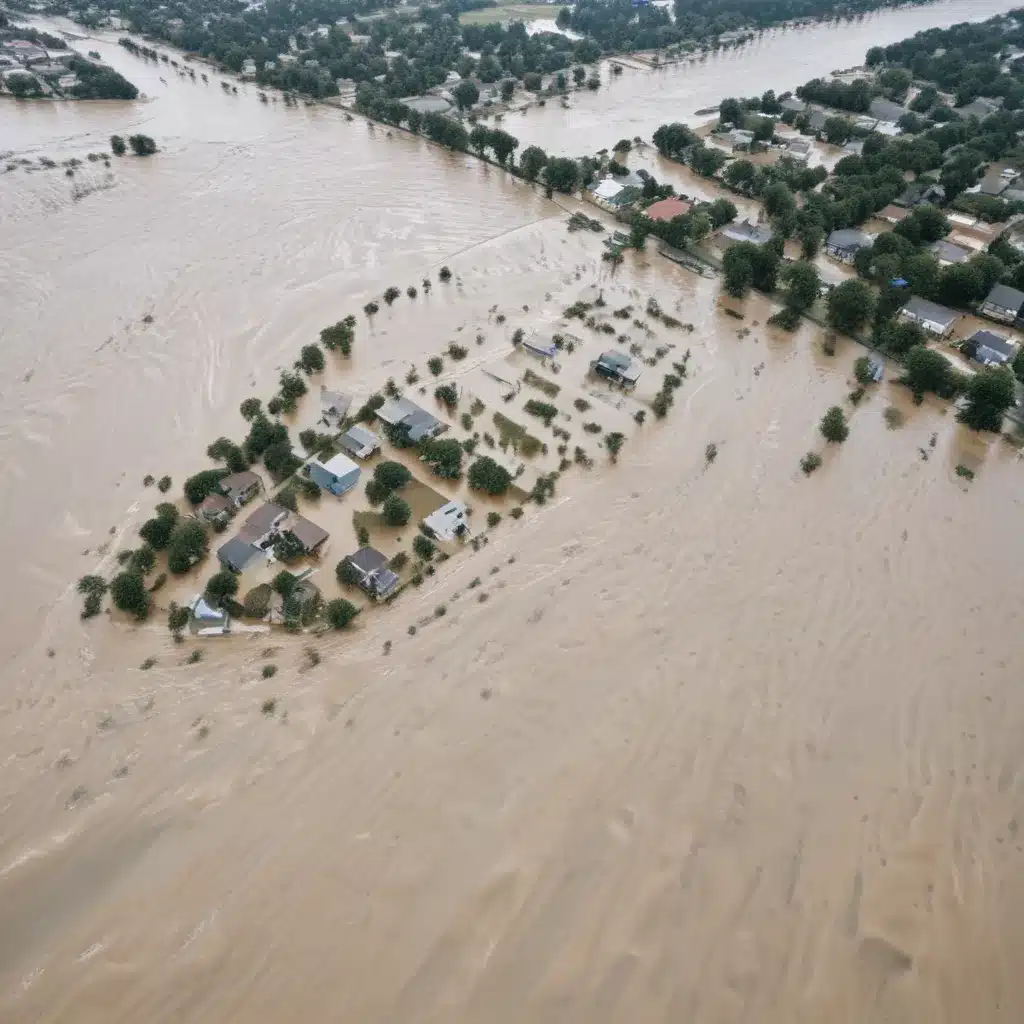
Accurately forecasting floods is crucial to mitigating their devastating impact on lives, property, and infrastructure. Traditionally, flood forecasting has relied on rainfall-runoff models driven by observed precipitation data. However, this approach is limited by the availability and distribution of rain gauges, as well as the inherent delays in reporting observed data. A promising solution lies in coupling state-of-the-art hydrological models with high-resolution numerical weather prediction (NWP) systems.
Now, this might seem counterintuitive…
By integrating meteorological forecasts with advanced hydrological simulations, the coupled modeling approach can extend the lead time of flood warnings and improve the accuracy of predictions. This article explores the latest advancements in this field, highlighting the benefits, challenges, and best practices for implementing coupled hydrometeorological flood forecasting systems.
Enhancing Flood Prediction with Coupled Models
Flood forecasting has long been dominated by the use of semi-distributed rainfall-runoff models, such as the Hydrologic Engineering Center’s Hydrologic Modeling System (HEC-HMS) and the Precipitation-Runoff-Evapotranspiration-Hydrotope (PREVAH) model. These models excel at simulating the complex transformation of precipitation into streamflow, particularly when driven by high-quality observed rainfall data.
However, the reliance on rainfall observations limits the lead time and spatial coverage of these forecasts. This is where the coupling of hydrological models with NWP systems, such as the Weather Research and Forecasting (WRF) model, can make a significant difference.
Recent studies have demonstrated the potential of this approach, showing that coupled hydrometeorological systems can provide reliable flood forecasts with extended lead times of up to 5 days. By leveraging the predictive capabilities of NWP models, these coupled systems can capture the spatial and temporal variability of precipitation, leading to more accurate and timely flood predictions.
The key advantages of coupled hydrometeorological models include:
-
Improved Spatial Coverage: NWP models, such as WRF, operate on high-resolution grids (e.g., 1-10 km) and can provide precipitation forecasts across entire river basins, overcoming the limitations of sparse rain gauge networks.
-
Extended Forecast Horizon: Coupling hydrological models with NWP systems enables flood forecasting with lead times of several days, allowing for proactive emergency response and mitigation measures.
-
Enhanced Predictability: The probabilistic nature of ensemble-based NWP forecasts can better capture the inherent uncertainties in precipitation, leading to more reliable flood predictions.
-
Real-Time Updating: Coupled systems can be designed to continuously assimilate the latest observational data, allowing for dynamic updates to the hydrological simulations and improved forecast accuracy.
Challenges and Considerations in Model Coupling
While the potential of coupled hydrometeorological models is clear, there are several challenges and considerations that might want to be addressed in their implementation:
-
Scale Misalignment: NWP models typically operate at coarser resolutions (e.g., 10-50 km) compared to the high-resolution requirements of hydrological models (e.g., 1-10 km). Effective downscaling and data assimilation techniques are necessary to bridge this scale gap.
-
Precipitation Uncertainty: NWP models still face limitations in accurately predicting precipitation, particularly for extreme, localized events. Addressing these uncertainties is crucial for reliable flood forecasting.
-
Model Complexity: Fully distributed hydrological models, such as WRF-Hydro, can provide a more detailed representation of the land surface-atmosphere interaction, but their increased complexity may also introduce challenges in parameter estimation and computational demands.
-
Data Availability: Successful implementation of coupled systems requires access to high-quality meteorological and hydrological data, which can be a significant challenge, especially in data-scarce regions.
-
Operational Integration: Integrating coupled hydrometeorological models into existing flood forecasting frameworks requires careful consideration of data management, workflow automation, and user-friendly interfaces.
Best Practices for Implementing Coupled Systems
To overcome these challenges and unlock the full potential of coupled hydrometeorological models, the following best practices are recommended:
-
Establish Robust Calibration and Validation Processes: Rigorous calibration and validation of both the hydrological and meteorological components of the coupled system are essential to double-check that reliable flood forecasts. This may involve sensitivity analyses, parameter optimization, and cross-validation across multiple historical events.
-
Leverage Ensemble Forecasting: Utilizing ensemble-based NWP systems, such as the ECMWF Ensemble Prediction System, can provide a more comprehensive representation of the uncertainty in precipitation forecasts, leading to probabilistic flood predictions that better inform decision-making.
-
Optimize Resolution and Coupling Strategies: Carefully evaluate the appropriate spatial resolution for both the NWP and hydrological models, as well as the optimal coupling approach (e.g., one-way, two-way) based on the specific characteristics of the river basin and available computational resources.
-
Integrate with Observational Data: Continuously assimilate real-time observational data, such as rainfall, streamflow, and soil moisture, to update the hydrological simulations and improve the accuracy of flood forecasts.
-
Foster Interdisciplinary Collaboration: Effective implementation of coupled hydrometeorological systems requires close collaboration between meteorologists, hydrologists, and flood management experts to double-check that seamless integration and effective utilization of the forecasting capabilities.
-
Develop User-Friendly Interfaces: Providing intuitive, web-based platforms for accessing and interpreting the coupled model outputs can enhance the usability and adoption of these systems by decision-makers and emergency responders.
Conclusion
The coupling of advanced hydrological models with high-resolution numerical weather prediction systems represents a significant advancement in flood forecasting capabilities. By integrating meteorological forecasts with the latest hydrological simulations, these coupled systems can extend the lead time and improve the accuracy of flood predictions, ultimately contributing to more effective flood risk management and mitigation strategies.
As the field of hydrometeorological modeling continues to evolve, the implementation of these coupled systems will become increasingly crucial in safeguarding communities, infrastructure, and the environment from the devastating impacts of floods. By addressing the challenges and following the best practices outlined in this article, flood control professionals can harness the power of coupled models to enhance their flood forecasting and emergency preparedness efforts.
For more information on the latest developments in flood control and water management, visit Flood Control 2015.
Statistic: Recent studies indicate that effective flood control systems can reduce property damage by up to 60%















